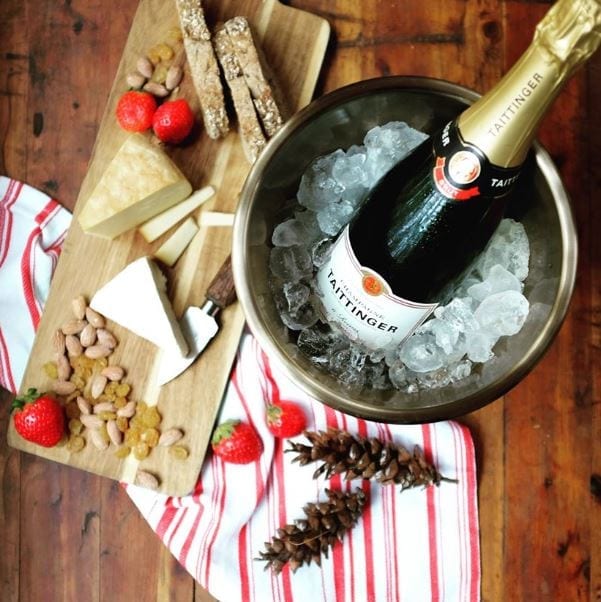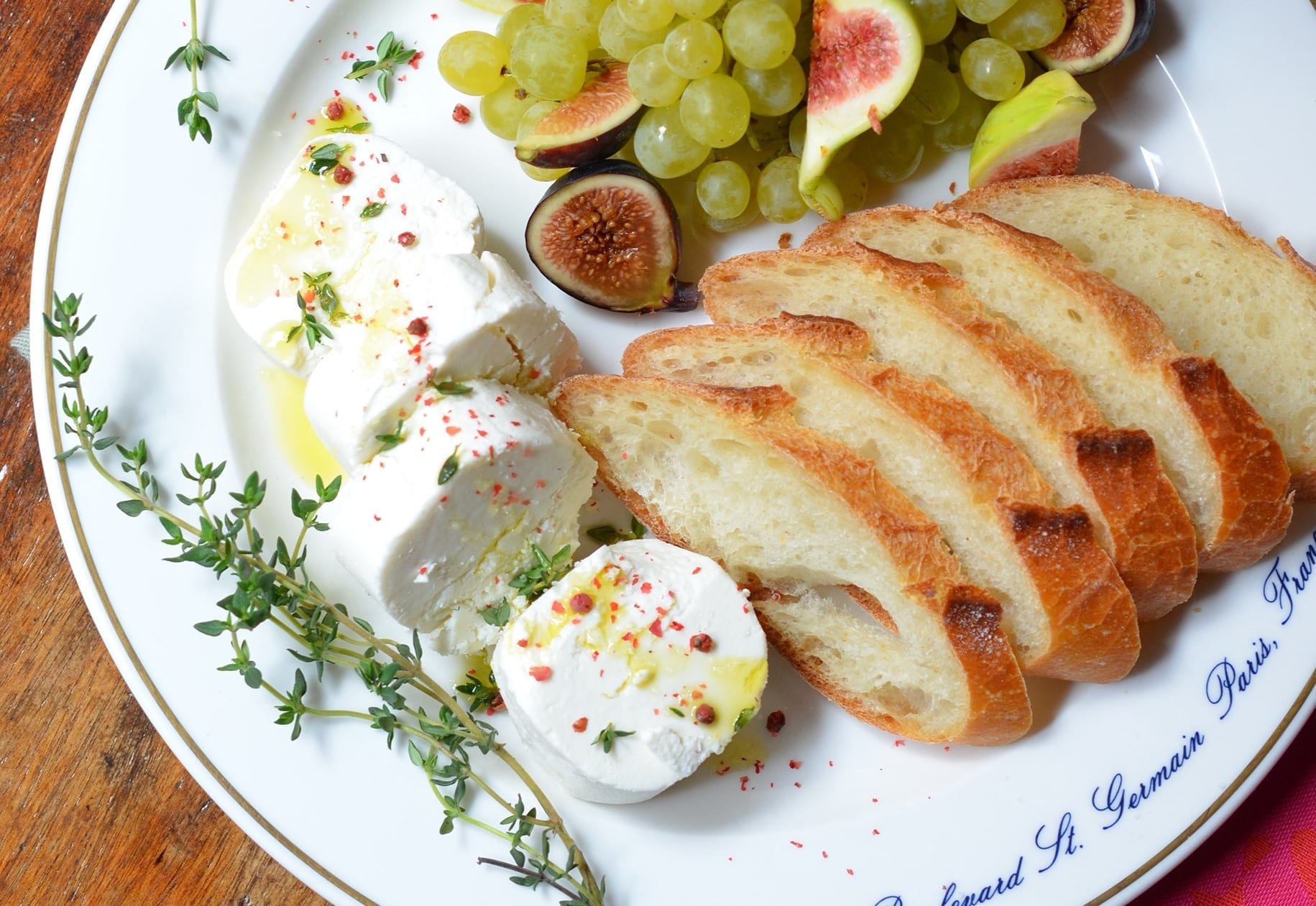A cheese plate is a must when entertaining French-style! In France, cheese is presented in smaller amounts and seen as something to nibble on as you and your guests bridge the time between the main course and the dessert. And sometimes cheese takes the place of dessert. A single variety is served, or sometimes an assortment depending on the number of guests at your soirée. It is presented elegantly on a wooden board or a dinner plate. You can also make individual servings on salad or dessert plates—this is especially lovely as it really makes an impression of thoughtfulness.
I let the cheese sit at room temperature for at least 30 minutes before serving (never serve cheese straight from the refrigerator). This helps to showcase the natural texture and flavor. Whichever way you choose, your presentation should be simple and restrained—and never gluttonous! Learn more below about how to create your own Assiette de Fromage, straight from my new cookbook, French Omelettes: Your New House Meal!
Composing Your Assiette de Fromage
Accompaniments
You can create a beautiful assiette with things like fresh and dried fruits, slices of baguette, hearty crackers, cornichons, preserves, and fresh herbs, tucked into one another—in small quantities. When available, I add edible flowers from the grocery store for color, texture, and taste—guests are always surprised and delighted by culinary blooms.
Less is more when it comes to any selection of accompaniments.
Cheese
Many grocery stores now carry a fabulous assortment of the most common and recognizable types of French cheeses. If you have a specialty cheese shop in your town, ask them to recommend a few types to pair with your menu—in some cases they will even place special orders. But if you are shopping at your local grocery store, these are the five types of French cheese most readily found:
- Comté – a hard, unpasteurized cow’s milk cheese with a slightly nutty flavor (Gruyère is
similar in flavor and a perfect substitute) - Roquefort – a creamy, sheep’s milk cheese with a pungent flavor (think of it as a more
flavorful blue cheese similar to the texture of Gorgonzola) - Camembert – a soft-ripening, cow’s milk cheese with an edible white rind and an
earthy, grassy and even mushroom-y flavor (with a soft and creamy texture) - Chèvre – a goat’s milk cheese with a tangy kick (pictured to the left drizzled with olive
oil, pink pepper, fleur de sel, and fresh thyme leaves) - Mimolette – a hard cheese with a sweet and subtle caramel flavor (it has a fudgy texture
and electric-orange color)
Wine
Cheese is high in fat, and the creamier the cheese, the more likely it is to coat the mouth and taste buds. That’s why a high quality sparkling wine or Champagne, like Champagne Taittinger Brut La Française, is one of the best pairings for a wide range of cheeses: the bubbles and acidity cut through the fat, cleanse the palate, and unlock fuller flavor in the cheese.





